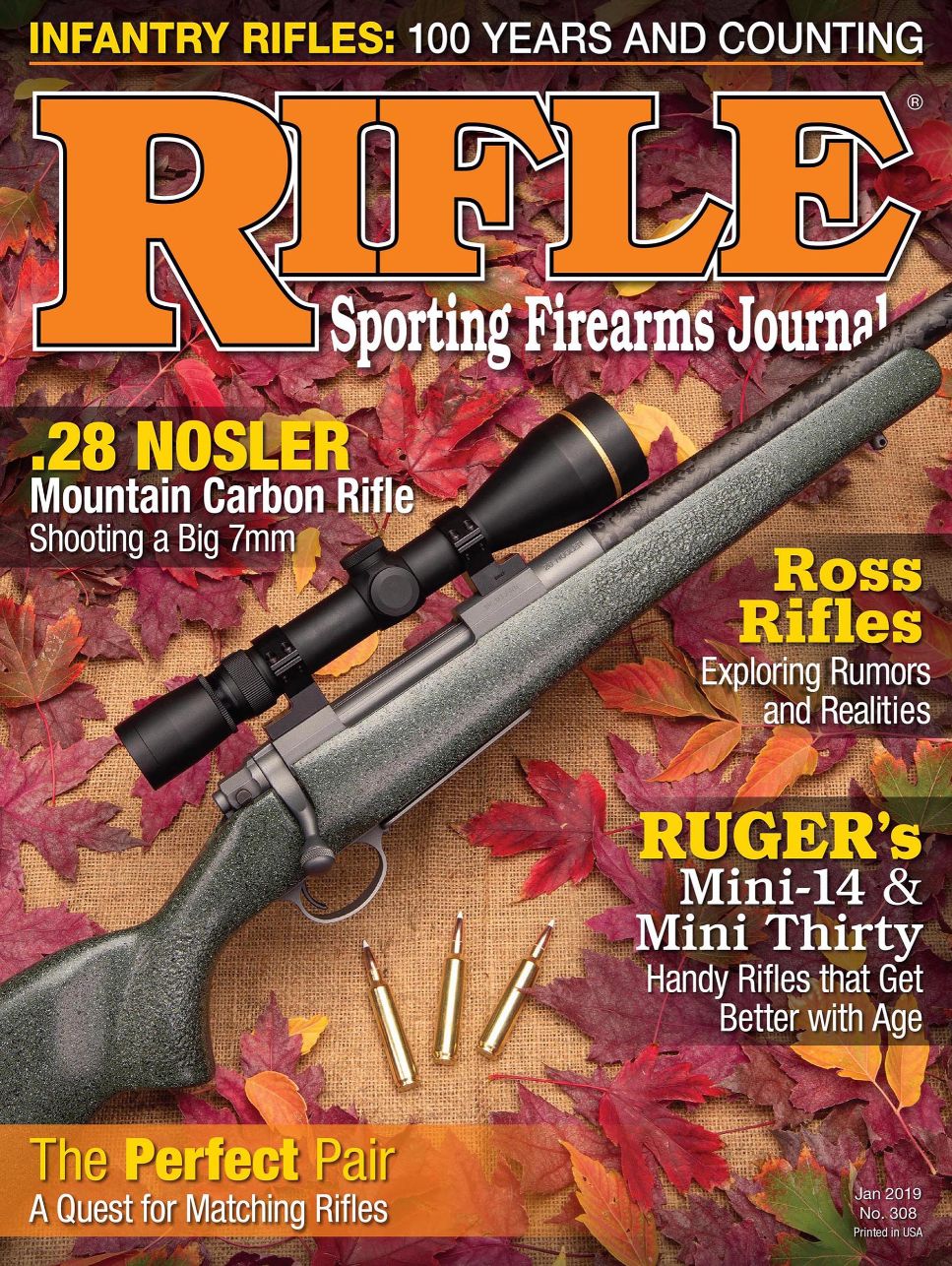A Rifleman's Optics
Kahles K 1050 Scope
column By: John Haviland | January, 20
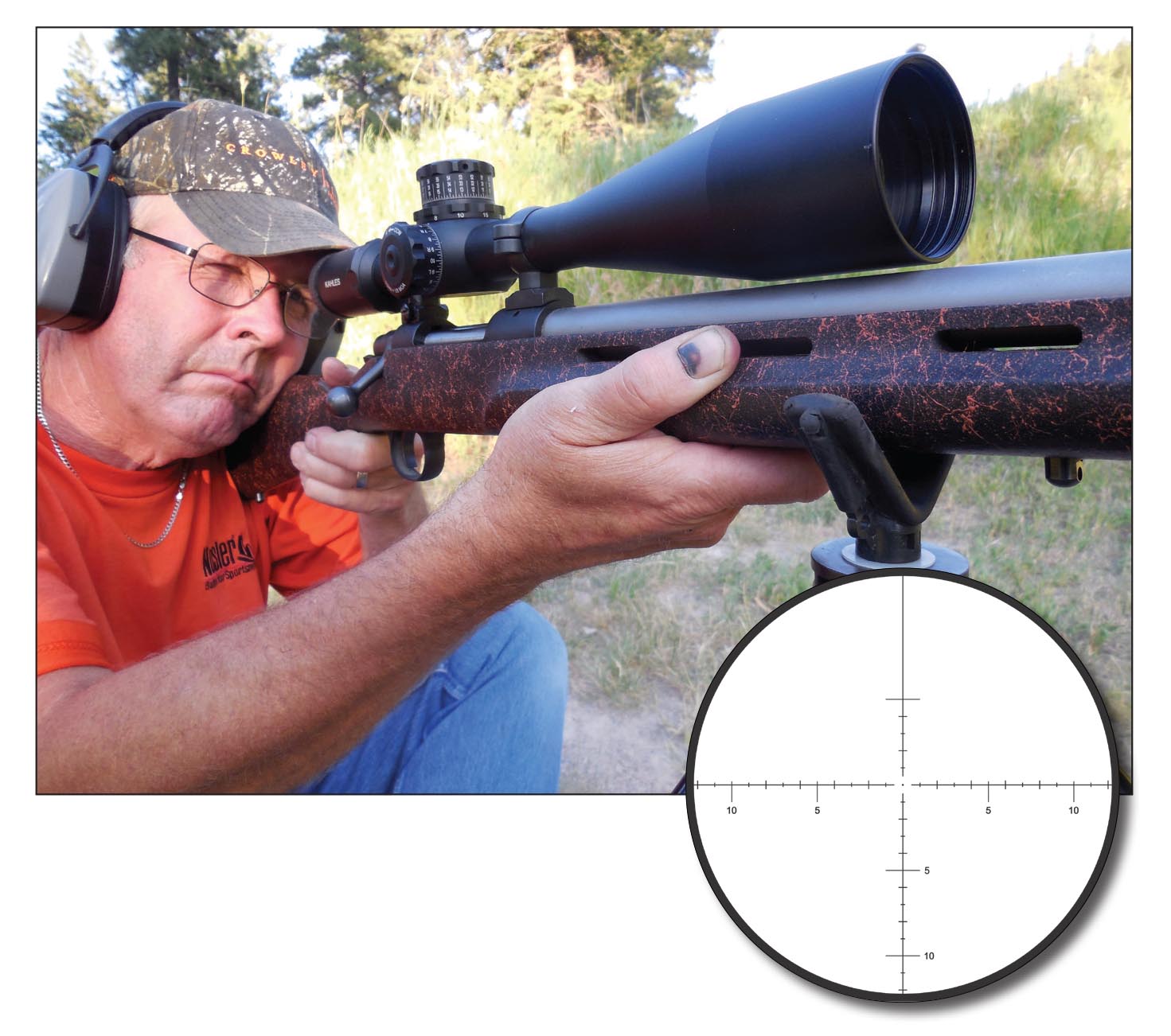
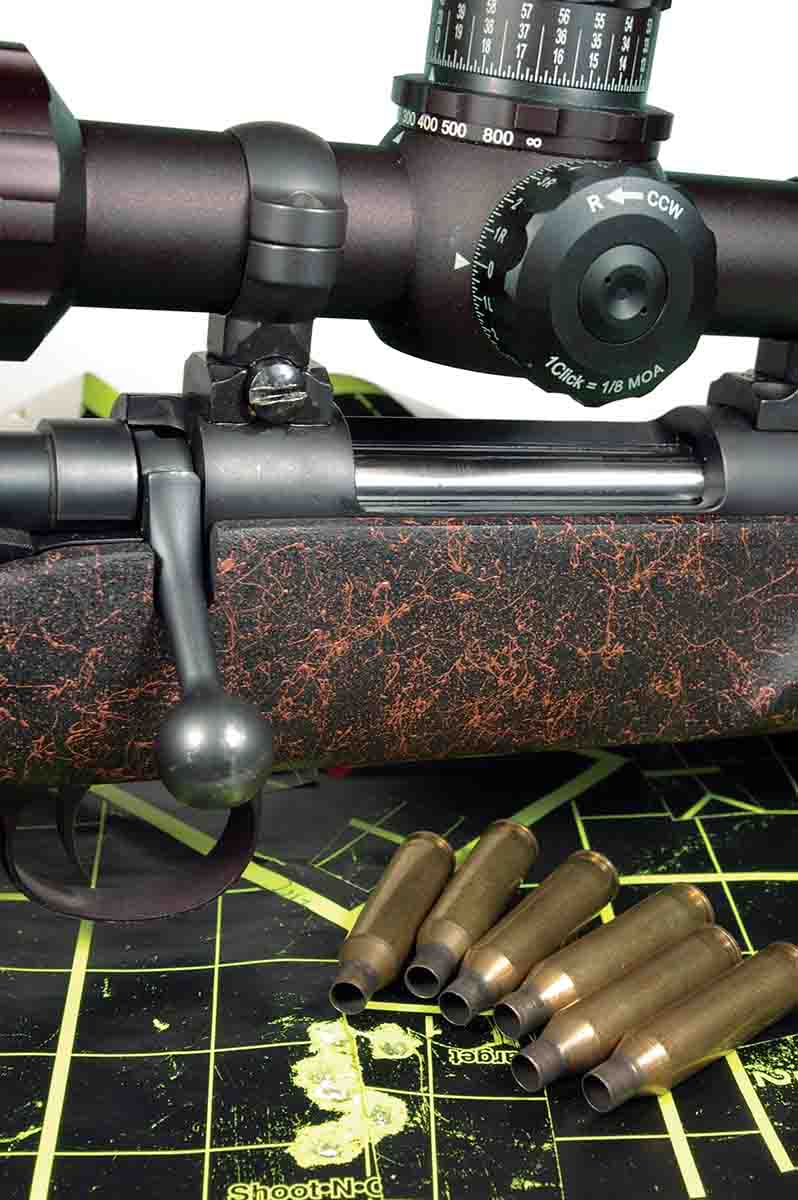
Kahles has entered the magnification race of competition shooting with its K 1050 10-50x 56mm scope. The original version of the scope was used on air rifles for field target shooting in the United Kingdom. “We beefed up the inside of the scope,” said Tom Hogan of Kahles, “and introduced it as a super-precision scope mainly for F-class and benchrest shooting.”
The 1050 fits fine for those sedentary target shooting sports. The scope is large with a weight of 31.4 ounces, length of 16.9 inches and 30mm main tube. The 56mm objective lens is none too large to provide a wide enough exit pupil with the scope turned to its higher magnifications.
The scope has 5.3 feet of elevation adjustment. That is plenty to turn up the elevation turret to shoot well past 1,200 yards. Windage adjustment is 3.6 feet. The parallax adjustment wheel is under the elevation turret. This is handy as you raise your eye slightly from behind the scope, and the wheel is right there. The dial turns to focus the scope down to 8 meters.
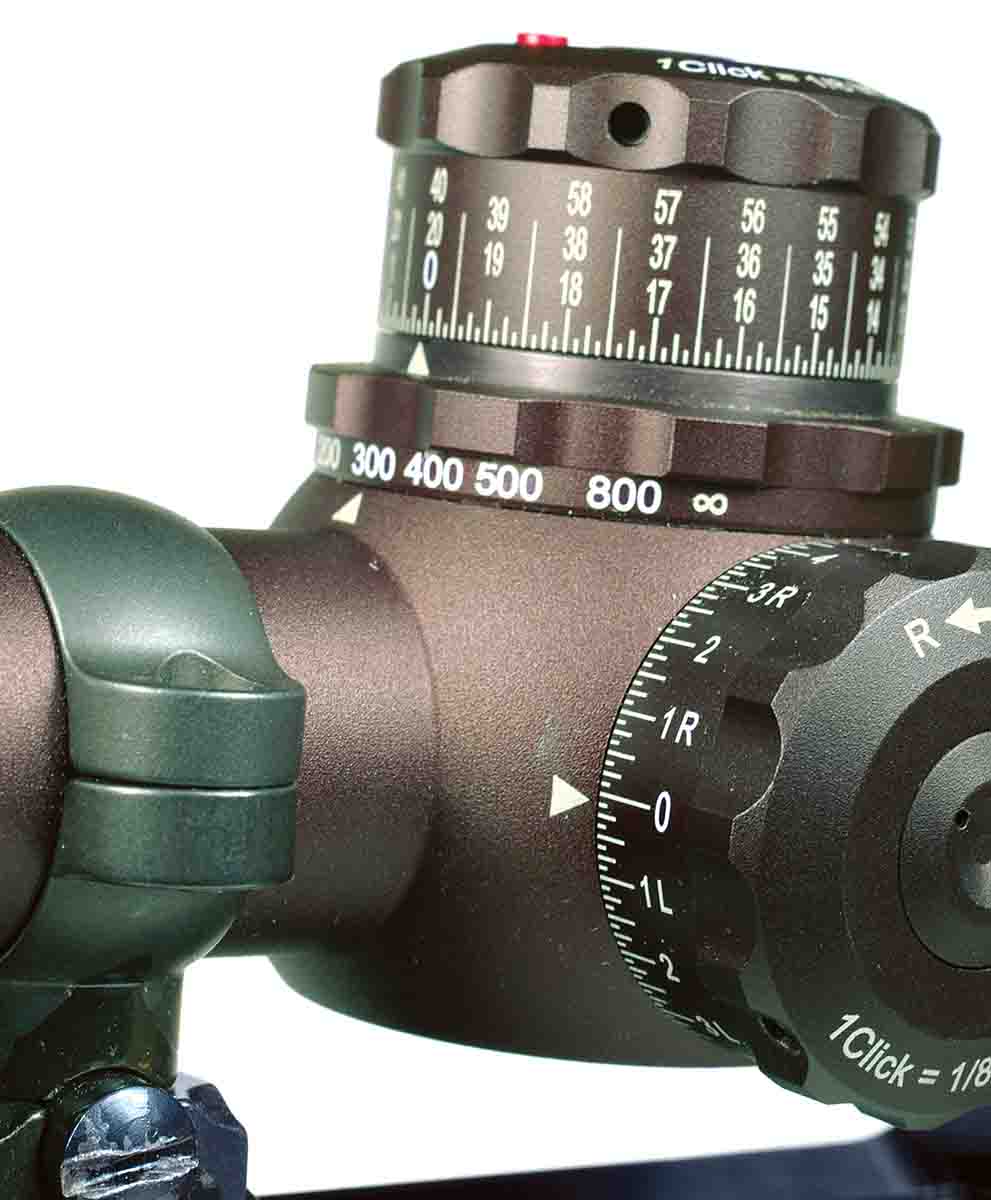
With the scope zeroed at 100 yards, I loosened two screws that held the elevation dial cap and turned the dial to lineup the “0” on the dial with the indicator mark on the tube. The dial still went four clicks below this zero set, in case I wanted to shoot a closer distance.
I shot groups with the scope’s magnification at its lowest and highest settings to determine if there was any bullet impact shift between that wide range of magnification. Three A-MAX bullets landed in .5 inch with the scope set on 10x. Three bullets formed the same size group aiming with 50x but hit slightly higher than the first three bullets. All six bullets landed in an inch.
While shooting with the scope on 50x, the reticle’s center dot quivered in time with my pulse. Perhaps if I looked through the scope long enough, that high magnification would provide my red blood cell count.
The midday temperature was a hot 90 degrees and the view was hampered by mirage rising from the grass. Looking through the scope at a 1951 USAF resolution test chart at 100 yards, I could plainly see the sixth smallest vertical and horizontal set of bars in the second largest series with the scope set on 10x. At 20x, resolution decreased to the fourth smallest bars in the second series. Set on 40x, the next largest bars were distinguishable, as were the next largest when set on 50x. The versatility of a variable scope is to adjust magnification to match the conditions.
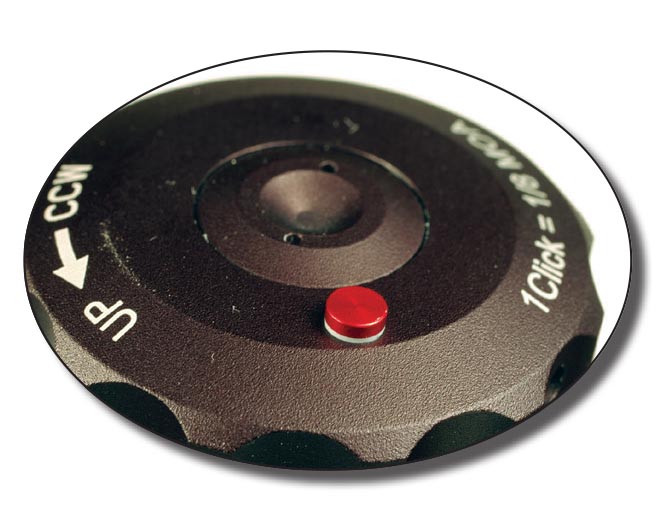
Shooting at 300 yards with the scope set on 30x to 35x provided a clear enough view to aim at one-inch squares way out there. At 50x, the view dimmed and mirage was noticeable.
Kahles’ website describes the view through the scope on its highest magnification as a “decent picture.” However, Hogan found that quite a few F-class shooters were using scopes with that much power. “People will call and ask what the highest power scope is we make,” Hogan said, “and that’s the one they want. So it is what it is,” he said.
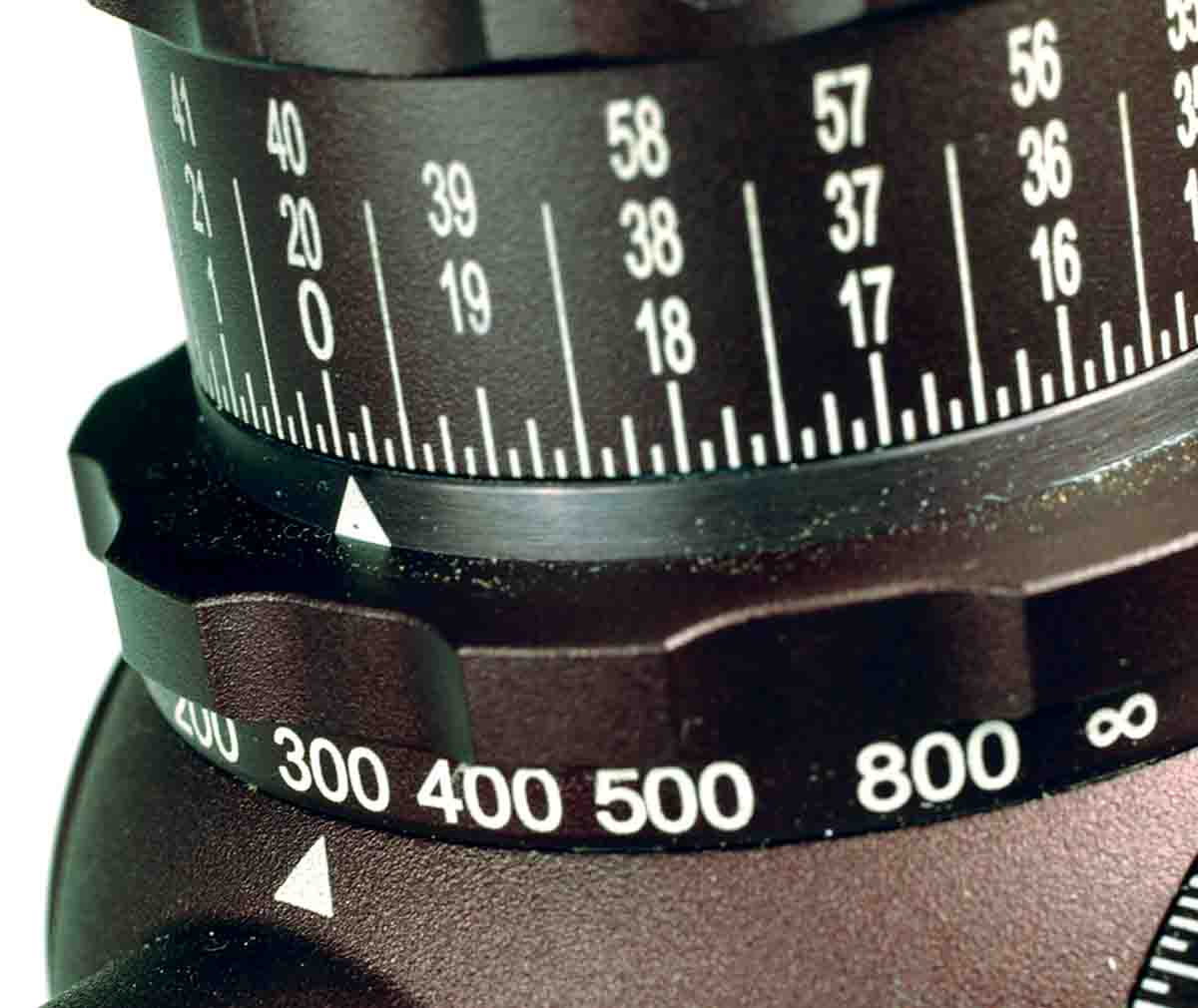
The scope’s MOAK reticle is uncluttered and is based on MOA spacing between hash marks with the scope set on 40x. The center aiming dot covers only .09 inch at 100 yards. However, the vertical and horizontal wires guide the eye to the dot.
The elevation turret has three rows of numbers. A red indicator pin on the top of the turret indicates at which revolution the turret is set. A red pin flush with the top of the turret signals the scope is on its first rotation. The pin, slightly above flush, indicates the turret is on its second rotation. The pin up and showing red and white indicates the turret is on its third rotation, and the highest row of numbers are in use.
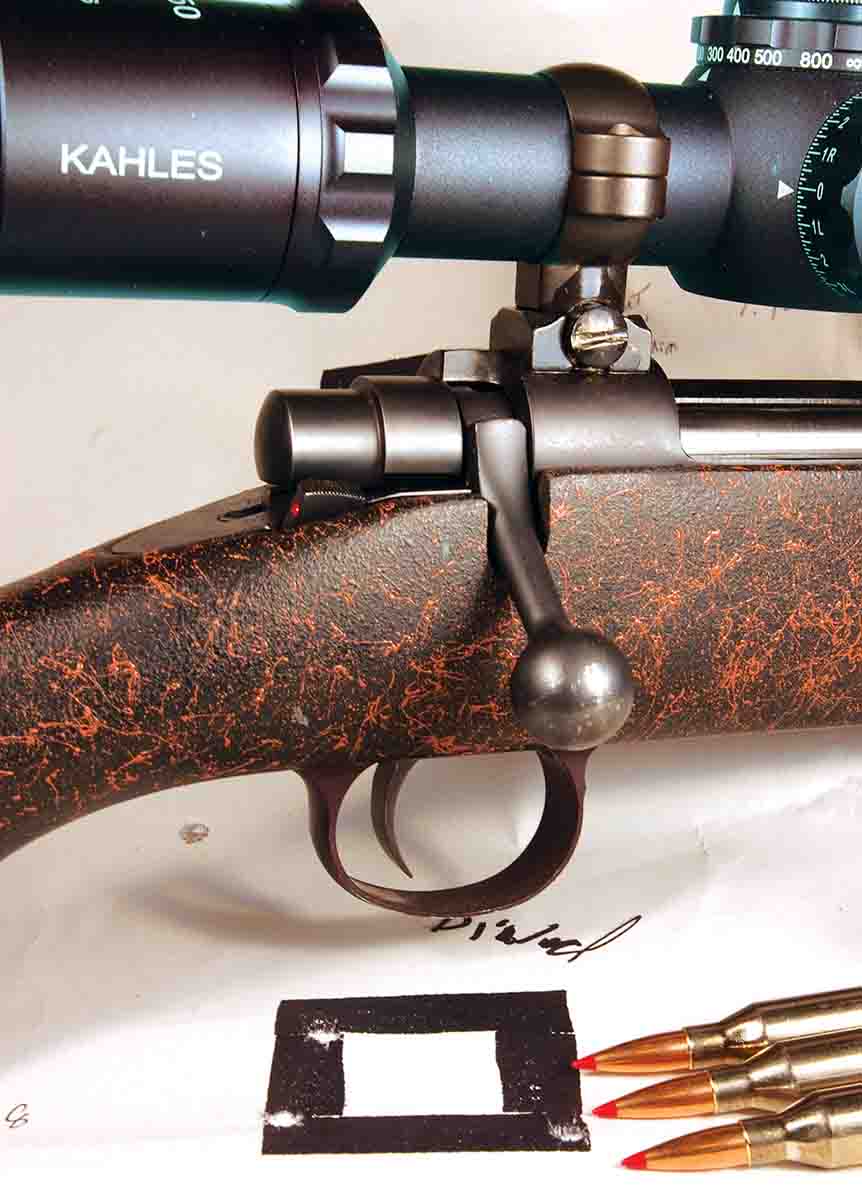
A-MAX bullets hitting right on aim at 100 yards dropped a sliver more than 12 inches at 300 yards. I shot again at 300 yards to determine if dialing to correct for bullet drop or aiming with the appropriate hold-over hash mark was faster and more precise. Three bullets landed in 1.98 inches, but 1.5 inches above aim using the fourth MOA hash mark down on the bottom vertical wire. Dialing up 32 clicks took a few extra moments. However, three bullets landed right on aim in a 1.98-inch group.
Active targets enhance the entertainment of shooting. So on a summer day I took the Cooper .243 and Kahles for a stroll. Far across an alfalfa field, ground squirrels ran back and forth between a string of mounds. Mirage through the scope showed a hint of wind flowing from the left and away. Forty power provided a clear view. Even with that magnification, gophers looked like ants crawling around. A rangefinder read 600 yards, give or take, to the mounds. I dialed up 13 MOA of elevation to compensate for bullet drop. The first bullet missed the gopher a few inches to the right and a sliver low. The bullet did hit the gopher’s mound, which was about the size of the 9 Ring on an F-Class 600-yard target. A half-minute of windage correction helped. The fourth bullet rolled a gopher off its mound.
Changing shooting distance even 50 yards added or subtracted about 7 inches of drop way out there. Of course, the breeze swelled and subsided. I used the appropriate hash marks to compensate.
Firing 40 rounds was enough entertainment for one day, with the promise the next day would allow putting the K 1050’s reserve magnification to good use.


